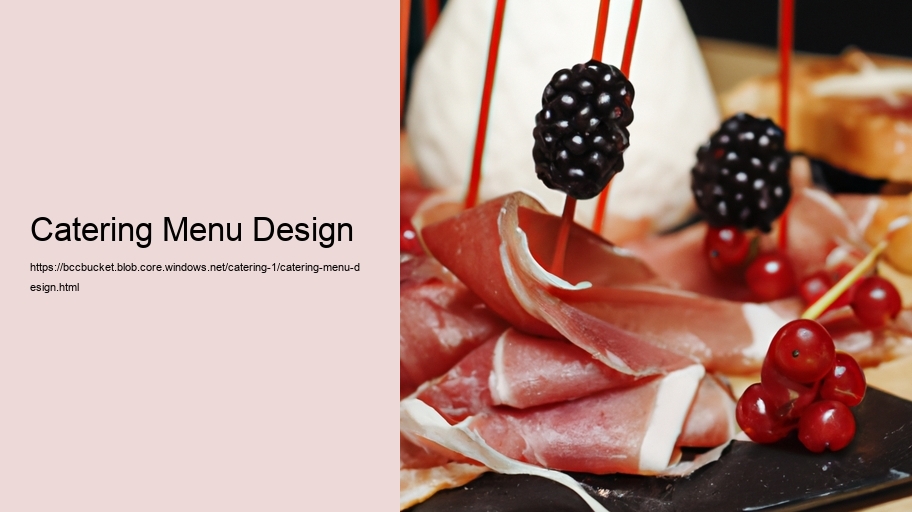Catering Menu Design: Crafting a Gastronomic Guide for Memorable Events
The art of catering extends far beyond the mere preparation of food; it encompasses the entire experience of dining, which begins the moment guests lay eyes on the menu. A catering menu is not just a list of dishes; it is an essential tool that sets the tone for an event and whets the appetite with the promise of culinary delights to come. Effective catering menu design is a blend of aesthetics, clarity, and strategic content arrangement, all of which are pivotal in creating an enticing and functional guide for guests.
The first consideration in catering menu design is understanding the nature of the event and the profile of the guests. A corporate gala will demand a different approach compared to a casual backyard wedding. The designer must reflect the formality and theme of the occasion in the menu's style, language, and presentation. For a sophisticated soirée, elegant fonts and a minimalist layout might convey the upscale nature of the event, while a rustic gathering could be complemented by earthy colors and hand-drawn illustrations.
The layout of a catering menu plays a crucial role in how guests interact with the available choices. A well-structured menu is intuitive, leading the eye through the courses in a logical progression. It typically starts with appetizers or hors d'oeuvres, followed by soups and salads, main courses, sides, and finally desserts. Within each category, items are often arranged from the lightest to the heartiest, enabling guests to envision their meal as they read through the options.
Another key element in catering menu design is the balance between creativity and simplicity. While exotic names and elaborate descriptions can add an air of sophistication and curiosity, they should not be so complex as to confuse the guests. It is important to strike a balance, providing enough information to excite the senses while maintaining clarity. Ingredients should be clearly listed, especially for the benefit of guests with dietary restrictions or allergies. A well-designed menu may also include symbols or icons indicating vegetarian, vegan, gluten-free, or other special diet options, ensuring that all guests can make informed choices with ease.
The visual appeal of the menu cannot be understated. Color schemes, font choices, and the use of white space contribute to the overall impression of the menu. The colors should complement the event's palette and décor, while the fonts must be legible and match the event's tone. High-quality images of the dishes may be included but should be used sparingly to avoid cluttering the menu or overshadowing the descriptions.
The language used in the menu descriptions is the final brushstroke in painting a picture of the feast to come. Descriptive and appetizing language can transform a simple dish into a tantalizing experience. Words like "succulent," "crisp," "smoky," or "drizzled" can transport guests into a sensory preview of the meal. However, the language should also be precise, avoiding over-exaggeration that might lead to unrealistic expectations.
In conclusion, catering menu design is a meticulous process that demands a harmonious blend of form and function. It requires an understanding of the event's character, a strategic arrangement of content, and a presentation that pleases the eye and excites the palate. A well-designed menu not only informs guests of their dining options but also contributes to the overall ambiance of the event. It encapsulates the essence of the culinary journey ahead and serves as an introduction to the memorable flavors and experiences that the caterer has thoughtfully crafted.
